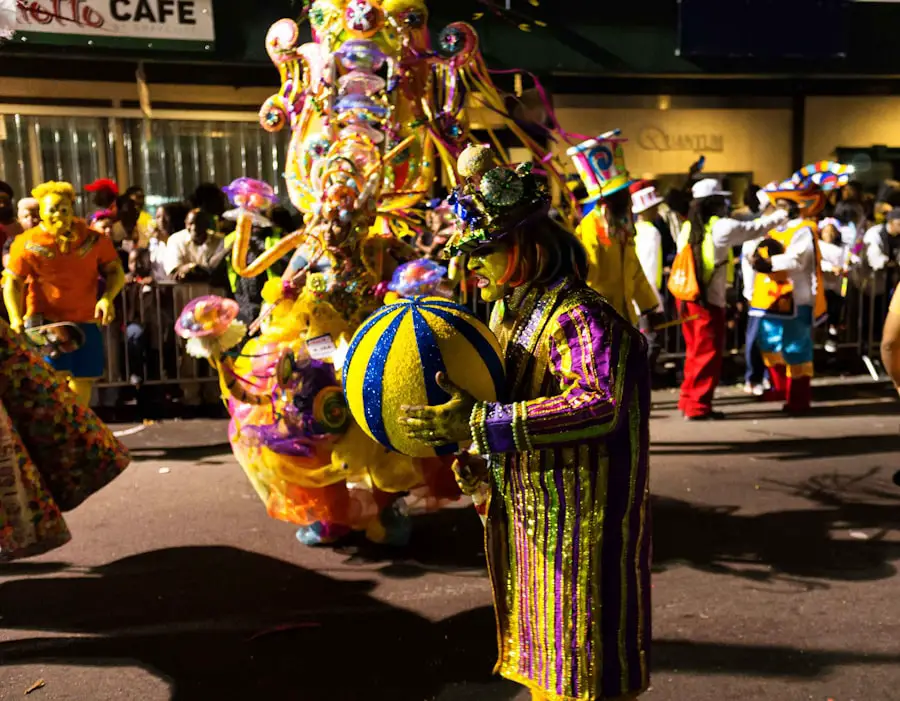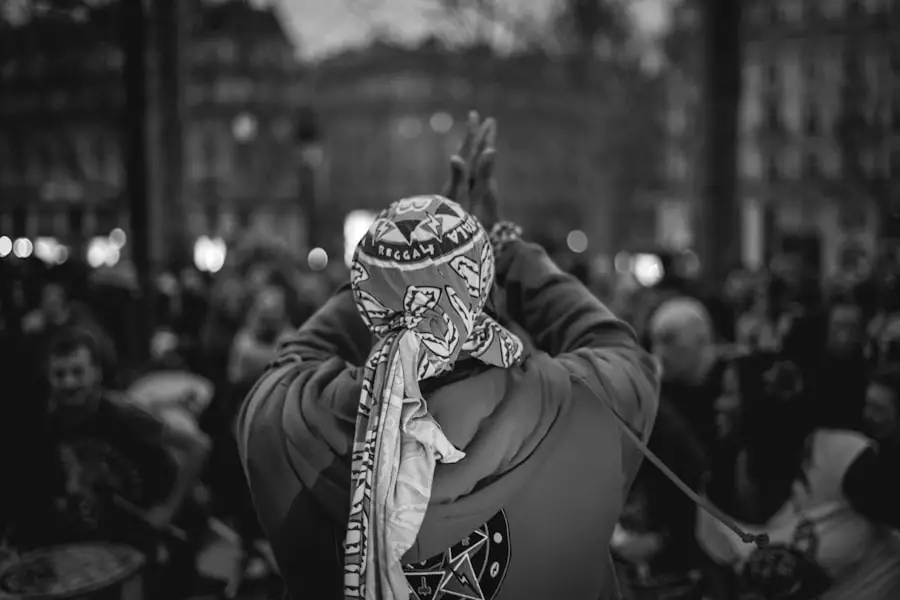Summer in Rio de Janeiro, which spans from December to February, is characterized by vibrant energy and a bustling atmosphere. This period marks the peak tourist season, drawing visitors from around the globe who flock to the city’s famous beaches, such as Copacabana and Ipanema. The sun shines brightly, with temperatures often soaring above 30 degrees Celsius (86 degrees Fahrenheit), creating an ideal environment for sunbathing, beach sports, and social gatherings.
The lively beach culture is palpable, with locals and tourists alike engaging in activities like beach volleyball, surfing, and enjoying refreshing coconut water from the numerous kiosks lining the shore. The summer months also bring a plethora of events and festivals that showcase Rio’s rich cultural heritage. One of the most notable is the New Year’s Eve celebration, known as Réveillon, where millions gather on the beaches dressed in white to symbolize peace and renewal.
Fireworks light up the sky at midnight, creating a breathtaking spectacle that is both a visual and auditory feast. Additionally, summer is a time when many local artists and musicians perform in open-air venues, contributing to the city’s vibrant nightlife. The streets come alive with samba rhythms, and the atmosphere is electric, making it an unforgettable experience for anyone visiting during this season.
Key Takeaways
- Summer is the peak season for Rio de Janeiro, with vibrant beach culture and lively atmosphere.
- Fall offers a tranquil time to visit Rio de Janeiro, with fewer crowds and pleasant weather.
- Winter in Rio de Janeiro is a time to experience the city’s festivities and cultural events.
- Spring brings mild weather to Rio de Janeiro, perfect for outdoor activities and sightseeing.
- Carnival season is the most exciting time to visit Rio de Janeiro, with colorful parades and lively celebrations.
Fall: A Tranquil Time to Visit Rio de Janeiro
As summer fades into fall, from March to May, Rio de Janeiro transforms into a more tranquil destination. The crowds begin to thin out, providing a more relaxed atmosphere for those who prefer to explore the city without the hustle and bustle of peak tourist season. The weather remains warm, with average temperatures ranging from 20 to 28 degrees Celsius (68 to 82 degrees Fahrenheit), making it comfortable for outdoor activities.
This is an excellent time for hiking in the Tijuca National Park or visiting iconic landmarks like Christ the Redeemer and Sugarloaf Mountain without long lines. Fall also offers a unique opportunity to experience local life in Rio. With fewer tourists around, visitors can immerse themselves in the culture by exploring local markets such as the Feira de São Cristóvão, which showcases Northeastern Brazilian cuisine and crafts.
This season is also marked by various cultural events, including art exhibitions and music festivals that highlight the talents of local artists. The slower pace allows travelers to engage more deeply with the city’s history and traditions, making it a perfect time for those seeking a more authentic experience.
Winter: Experience the Festivities in Rio de Janeiro

Winter in Rio de Janeiro, occurring from June to August, is often overlooked by travelers who associate Brazil with perpetual warmth. However, this season brings its own charm and a unique set of festivities that are worth experiencing. While temperatures can drop to around 18 degrees Celsius (64 degrees Fahrenheit) at night, daytime temperatures remain pleasant, making it an ideal time for sightseeing.
The cooler weather encourages locals to don their winter attire, creating a different ambiance in the city. One of the highlights of winter in Rio is the Festas Juninas, traditional celebrations that take place throughout June. These festivities are rooted in Brazilian folklore and are characterized by lively music, dance, and delicious food such as corn-based dishes and sweet treats.
Street parties pop up across neighborhoods, inviting both locals and visitors to join in the fun. Additionally, winter is a great time for cultural events like the Rio de Janeiro International Film Festival, which showcases both national and international films, providing insight into diverse cinematic expressions. The combination of cultural richness and milder weather makes winter an appealing time to visit.
Spring: Enjoy the Mild Weather in Rio de Janeiro
| Month | Temperature (°C) | Rainfall (mm) |
|---|---|---|
| September | 25 | 60 |
| October | 26 | 80 |
| November | 27 | 100 |
Springtime in Rio de Janeiro spans from September to November and is often regarded as one of the best times to visit due to its mild weather and blooming landscapes. As temperatures gradually rise again, averaging between 22 to 30 degrees Celsius (72 to 86 degrees Fahrenheit), visitors can enjoy outdoor activities without the sweltering heat of summer. This season is particularly beautiful as flowers bloom across parks and gardens, including the renowned Jardim Botânico, where visitors can stroll through lush greenery and admire exotic plant species.
Spring also heralds a series of cultural events that celebrate Brazilian art and music. The city hosts various art exhibitions and music festivals that attract both local talent and international artists. One notable event is the Rio Music Conference, which brings together musicians, DJs, and industry professionals for discussions and performances that highlight Brazil’s vibrant music scene.
Additionally, spring is an excellent time for hiking in places like Pedra Bonita or exploring the scenic beaches of Barra da Tijuca without the overwhelming crowds typical of summer. The combination of pleasant weather and cultural vibrancy makes spring an ideal season for exploration.
Carnival Season: The Most Exciting Time to Visit Rio de Janeiro
Carnival season in Rio de Janeiro is arguably one of the most exhilarating times to visit this iconic city. Taking place annually before Lent, usually in February or early March, Carnival transforms Rio into a pulsating hub of music, dance, and celebration. The streets come alive with samba parades featuring elaborate floats and costumes that showcase Brazil’s rich cultural heritage.
The Sambadrome becomes the epicenter of this grand event, where samba schools compete in a dazzling display of rhythm and artistry. Beyond the official parades, street parties known as “blocos” take over neighborhoods throughout the city. These informal gatherings invite everyone to join in the revelry, dancing to live music while enjoying traditional Brazilian snacks like coxinhas and pastéis.
The atmosphere is infectious; locals and tourists alike come together to celebrate life through dance and music. Carnival is not just an event; it’s an experience that encapsulates the spirit of Rio de Janeiro—vibrant, passionate, and full of joy.
Off-Season: A Quieter and More Affordable Time to Travel to Rio de Janeiro

The off-season in Rio de Janeiro typically runs from May to September when tourist numbers dwindle significantly. This period offers a unique opportunity for travelers seeking a quieter experience at more affordable prices. Accommodations often provide discounts during these months, making it easier for budget-conscious travelers to enjoy a stay in this vibrant city without breaking the bank.
Additionally, popular attractions are less crowded, allowing for a more intimate exploration of sites like the Selarón Steps or the Museum of Tomorrow. Visiting during the off-season also allows travelers to engage more deeply with local culture. With fewer tourists around, it’s easier to connect with residents and discover hidden gems that might be overlooked during peak times.
Local restaurants may offer seasonal dishes that reflect traditional Brazilian cuisine without the rush of summer crowds. This quieter atmosphere can lead to meaningful interactions and experiences that enrich one’s understanding of Rio’s diverse culture.
Shoulder Season: The Best of Both Worlds in Rio de Janeiro
The shoulder seasons—spring (September to November) and fall (March to May)—offer travelers a perfect blend of favorable weather conditions and manageable crowd sizes. During these months, visitors can enjoy mild temperatures while avoiding the overwhelming influx of tourists typical during summer or Carnival season. This balance allows for a more relaxed exploration of Rio’s attractions while still enjoying vibrant cultural events.
In spring, as nature comes alive with blooming flowers and lush greenery, outdoor activities such as hiking or beach outings become particularly enjoyable. Meanwhile, fall provides an opportunity to experience local life more authentically as festivals celebrate Brazilian culture without the distractions of large crowds. Both shoulder seasons present unique opportunities for travelers to engage with Rio’s rich history while enjoying its stunning landscapes.
Considerations for Traveling to Rio de Janeiro Throughout the Year
When planning a trip to Rio de Janeiro at any time of year, several considerations can enhance your experience. First and foremost is understanding local customs and cultural practices that may vary by season. For instance, during Carnival season, it’s essential to book accommodations well in advance due to high demand; conversely, during off-peak months, spontaneous travel plans can be more feasible.
Safety is another important factor; while Rio has made significant strides in improving safety for tourists, it’s wise to remain vigilant regardless of when you visit. Familiarizing yourself with local neighborhoods can help you navigate more confidently. Additionally, considering local holidays or events can enrich your travel experience; participating in community celebrations or festivals provides insight into Brazilian culture that goes beyond typical tourist attractions.
Ultimately, each season offers its own unique charm and opportunities for exploration in Rio de Janeiro. Whether you’re drawn by the vibrant energy of summer or prefer the tranquility of fall or winter festivities, understanding what each season has to offer will help you make informed decisions about your travel plans.
If you are planning a trip to Rio de Janeiro, you may want to consider the best time to visit this vibrant city. According to a recent article on TakeTravelInfo, the ideal time to travel to Rio de Janeiro is during the summer months of December to March when the weather is warm and sunny. This article provides valuable insights on the best travel skirts for women to pack for your trip to Rio de Janeiro, ensuring you are both stylish and comfortable during your visit.
FAQs
What is the best time to travel to Rio de Janeiro?
The best time to travel to Rio de Janeiro is during the months of September to November and March to May. These months offer pleasant weather with fewer crowds and lower prices.
What is the weather like in Rio de Janeiro during the best time to travel?
During the best time to travel to Rio de Janeiro, the weather is typically warm with temperatures ranging from 70°F to 80°F. There is also less rainfall during these months.
Are there any major events or festivals during the best time to travel to Rio de Janeiro?
Yes, the best time to travel to Rio de Janeiro coincides with major events and festivals such as the Rio Carnival in February and the Rio International Film Festival in September.
Are there any drawbacks to traveling to Rio de Janeiro during the best time?
One potential drawback of traveling to Rio de Janeiro during the best time is that it may still be crowded, especially during major events and festivals. It is also important to book accommodations and flights in advance.

1 thought on “Best Time to Travel to Rio de Janeiro: A Seasonal Guide”